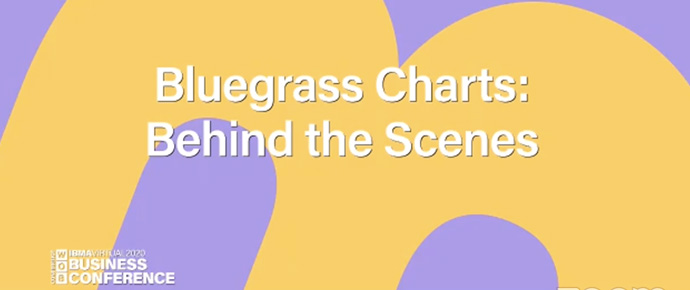
One of the great mysteries of bluegrass – how so many different bluegrass charts come up with such divergent results – is a little less puzzling today, thanks to one of the best panels I’ve heard in 11 years of attending IBMA World of Bluegrass conferences.
With writer and DJ Daniel Mullins moderating, four creators and managers of major charts pulled back the curtain a bit on their processes. Thanks to five of them, the next time someone asks me a question about the charts – probably the most-asked query I get after, “will you review my record?” – I’ll have an answer.
The panelists represented three major bluegrass charts: Lee Michael Demsey, who compiles the Bluegrass Unlimited chart; Terry Herd, Bluegrass Today founder and creator of the site’s Bluegrass, Grassicana and Gospel charts; and Jim Asker, in charge of Billboard’s bluegrass chart. Adding a Gospel perspective was Rick Francis, of Singing News.
Here, in a nutshell, is how each chart works:
Bluegrass Unlimited: Demsey, a highly regarded DJ in the Washington, DC, area, has been compiling the monthly chart for 30 years. Each reporting DJ, mostly those who are on the air at least two hours a week and who play a lot of new music, submits a Top 10 list each month, with no more than two songs per artist. Demsey assigns points to each song mentioned, with 10 points for first place, 9 for second, and so on. The criteria that each DJ uses is rather loose, and subjective. Lists can be based on spins, but DJs can also use their own judgment, listener requests, or other yardsticks.
Bluegrass Today: This weekly chart is driven by spins, or airplay, as reported by DJs on terrestrial or satellite radio, so there’s less subjectivity than in other charts, Herd said. Some DJs have more of a say than others. For example, if a DJ for one station plays the song one time, that’s one spin. But if a DJ whose show is syndicated to, say, 50 stations, plays a song once, that one spin counts as 50. Then there’s SiriusXM’s Bluegrass Junction. It would be unfair to consider the channel as being a separate station in every town, Herd said, but it would be seriously underrepresented to count each spin just once. So the chart applies a multiplier to the actual spin count.
Billboard: The bluegrass album chart that Asker manages is based strictly on sales, but not, to the consternation of some artists and labels, not all sales. The sales numbers come from Nielsen, the tracking service that Billboard used to partner with and now owns. Because many bluegrass recordings are sold directly by artists at festivals and shows, or on their websites, and because many artists aren’t using Nielsen tracking codes, some music falls through the cracks. But some good news might be coming soon. Asker said Billboard is expected to switch the bluegrass chart to a consumption-based model in the near future, counting terrestrial radio plays and, in some manner, streams.
Singing News: The publication keeps charts for Southern Gospel and Bluegrass Gospel, generally giving the artists and labels the right to pick their category. Francis said DJs from 11 stations report their top 5 songs each month. He uses a 5-4-3-2-1 point system to compile separate Top 10 charts for SoGo and Bluegrass Gosepel.
The most common question each chart manager gets is what artists can do to help their songs chart, and they all have similar answers: Network. Talk to the DJs, make sure they have your new music, be friendly.
“First, you’ve gotta have a great song,” Herd said, and it has be available to DJs, through email, AirPlay Direct or other means. “If they don’t have it, they can’t play it. If they can’t play it, they can’t report it. And if they can’t report it, it can’t chart.”
If you’re registered for the IBMA business conference, check out an on-demand replay of the session. It’s well worth 55 minutes of your time.








